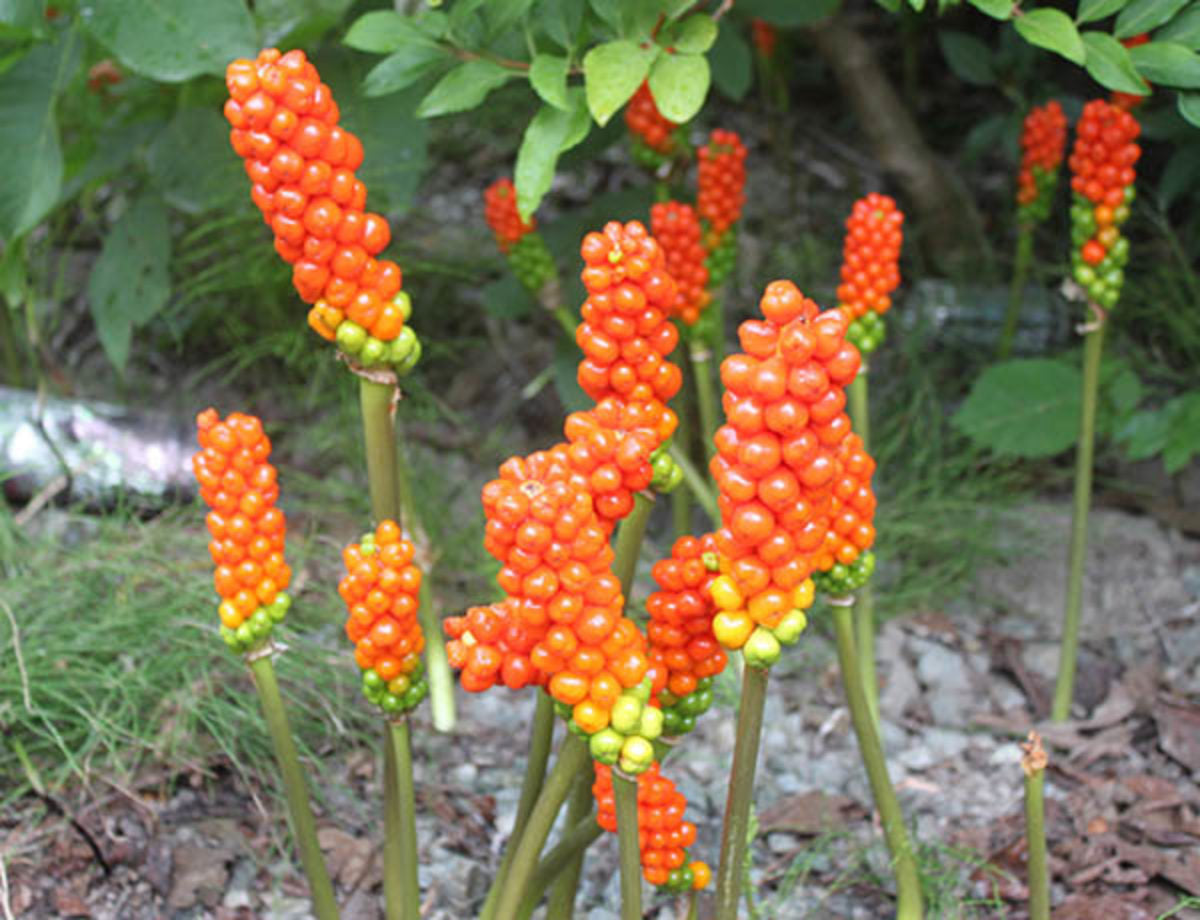Arum italicum
Couldn't load pickup availability
Description
Arum italicum, also known as Italian Arum or Jack-in-the-Pulpit, is an elegant and striking perennial that offers an intriguing display of architectural foliage and unique flowers. This plant is highly valued for its glossy, arrow-shaped leaves that emerge in the spring and its fascinating flower structure. Arum italicum is perfect for adding texture and visual interest to shady garden spots, woodland gardens, or as an indoor ornamental plant. Its bold leaves and distinctive flower structure make it a must-have for garden enthusiasts seeking something unique.
Features and Specifications:
- Leaf Shape: Glossy, arrow-shaped leaves that are bright green in the spring and develop a mottled pattern in the fall. The foliage is attractive and adds texture to garden beds.
- Flowering: Arum italicum produces a unique spadix (the Jack) encased in a hooded spathe (the Pulpit), which resembles a mini pulpit or hood. The flowers are typically white or pale yellow and appear in late winter or early spring before the leaves fully emerge.
- Plant Height: Grows up to 30–45 cm (12–18 inches) tall, making it ideal for low-growing, shady garden spots or containers.
- Spread: Spreads 20–30 cm (8–12 inches) wide, creating a lovely ground cover with its dense foliage.
- Sunlight Requirements: Prefers partial to full shade. It thrives in shaded woodland gardens, under trees, or in areas with dappled sunlight.
- Soil Type: Grows best in moist, well-drained, slightly acidic to neutral soil. It tolerates a range of soil types, though it prefers humus-rich earth.
- Hardiness Zones: Suitable for USDA zones 5–9. It can tolerate some frost, and the foliage dies back in winter to re-emerge in the spring.
- Watering: Requires regular watering to keep the soil moist, especially in dry conditions. Avoid waterlogging, as this can cause root rot.
- Toxicity: All parts of the plant are toxic if ingested, so it should be kept out of reach of pets and children.
- Uses: Ideal for shaded garden beds, woodland areas, under trees, or as a decorative indoor plant. Its striking foliage and unique flowers make it a great choice for adding structure to any space.
Planting Instructions:
- Planting Time: Best planted in the fall or early spring, depending on your local climate. In mild climates, planting in fall is ideal for establishing the plant before winter.
- Depth and Spacing: Plant tubers or rhizomes about 5–10 cm (2–4 inches) deep in well-drained soil. Space plants 20–30 cm (8–12 inches) apart to allow for natural spreading.
- Watering: Keep the soil consistently moist, especially during dry spells. Avoid letting the plant sit in waterlogged soil.
- Fertilization: Apply a balanced fertilizer in spring to encourage healthy growth, especially in nutrient-poor soil.
- Maintenance: In winter, the plant may die back, but new growth will emerge in spring. Mulch in colder climates to protect the plant during frost. Remove dead or damaged leaves to keep the plant looking tidy.
Key Benefits:
- Architectural Appeal: The unique Jack-in-the-Pulpit flowers and glossy arrow-shaped foliage provide a bold and ornamental addition to any garden.
- Shade Tolerance: Perfect for adding structure and interest to shaded or woodland gardens where many other plants might struggle to thrive.
- Low Maintenance: Once established, Arum italicum is a low-maintenance perennial that requires little attention, making it ideal for beginner gardeners.
- Winter Interest: Although the plant dies back in winter, its distinctive flower structure in early spring makes it one of the first plants to provide seasonal interest.
- Toxicity Caution: While the plant is beautiful, it is toxic if ingested, so use caution around pets and small children.
Arum italicum is a stunning, low-maintenance perennial that will bring architectural elegance and seasonal interest to any shaded garden. Its dramatic foliage and unique flowers are sure to attract attention, whether planted in woodland gardens, as part of a shady border, or as a striking indoor plant.









